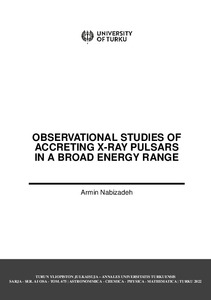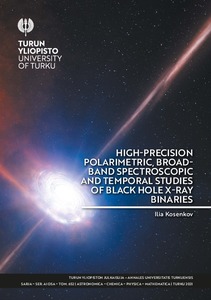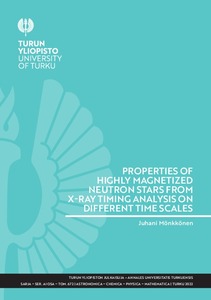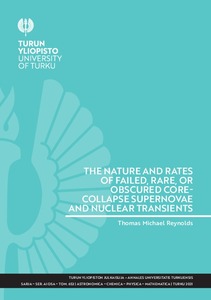Hae
Aineistot 1-6 / 6
Observational studies of accreting X-ray pulsars in a broad energy range
(Turun yliopisto, 2022-11-04)
Among all interesting astrophysical objects in the universe, only a few are capable of improving our understanding of physics under extreme conditions. Accreting neutronstars are one of these objects. These compact objects ...
High-precision polarimetric, broad-band spectroscopic and temporal studies of black hole X-ray binaries
(Turun yliopisto, 2021-10-08)
Black holes are among the most unusual objects in the Universe. Powered through accretion, they are strong sources of radiation in a broad energy range, from radio to hard X-rays. Stellar-mass black holes manifest themselves ...
Where Are the Stars of Yesteryear?: A Reflection on Astrophysical Transience
(Turun yliopisto, 2025-02-24)
This thesis concerns a number of kinds of astrophysical transients, including interacting supernovae (SNe), gap transients and tidal-disruption events. There are three papers included and they address differing phenomena, ...
Properties of highly magnetized neutron stars from X-ray timing analysis on different time scales
(Turun yliopisto, 2022-10-26)
Massive stars end their lives either by collapsing directly into a black hole or by exploding as a supernova, leaving behind their collapsed core, a black hole or a neutron star (NS). NSs are a showcase of extremities: ...
Galaxy evolution through the lens of active galactic nuclei, their host galaxies, and environments
(Turun yliopisto, 2024-06-11)
The body of research relayed in this dissertation pertains to investigating the immediate environments of Type I quasars for clues to the formation and evolution of galaxies through observations. The neighboring galaxies ...
The nature and rates of failed, rare, or obscured core-collapse supernovae and nuclear transients
(Turun yliopisto, 2021-11-04)
In this thesis, two major types of astrophysical phenomena are discussed: corecollapse supernovae and transient events associated with supermassive black holes in the nuclei of galaxies. The physical processes and observable ...





